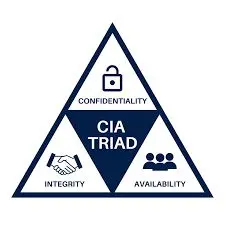The Basics of Cybersecurity Everyone Should Know
Introduction
Cybersecurity is the practice of protecting computers, servers, mobile devices, electronic systems, networks, and data from malicious attacks. In a world where digital technology touches nearly every aspect of our lives—from online banking and shopping to work and social interaction—understanding cybersecurity is essential. This knowledge helps individuals and organizations safeguard their sensitive information, maintain privacy, and prevent financial and reputational damage.
This article will cover the fundamental concepts, common threats, and best practices everyone should know to stay safe online. For more detailed information on protecting yourself, especially against hackers and phishing, see how VPNs help protect you from hackers and phishing attacks.
Core Principles of Cybersecurity: The CIA Triad
Cybersecurity is built around three essential principles often called the CIA triad:
1.Confidentiality
Confidentiality means ensuring that information is accessible only to those authorized to see it. For example, your private emails, bank statements, and personal photos should be protected from unauthorized access.
How it’s achieved:
Encryption: Data is scrambled so only authorized users can read it.
Access controls: Using passwords, biometrics, or security tokens to restrict entry.

2.Integrity
Integrity means that data should remain accurate, complete, and unaltered except by authorized users. For instance, a hacker shouldn’t be able to modify your medical records or bank transactions.
How it’s achieved:
- Checksums and hashes: Verify data hasn’t been tampered with.
- Digital signatures: Confirm the authenticity and integrity of messages or documents.
3.Availability
Availability ensures that authorized users can access data and resources when needed. This means that websites, services, and files should not be disrupted or taken offline by attacks or failures.
How it’s achieved:- Redundant systems: Backup servers or networks that take over in case of failure.
- Protection against DoS (Denial of Service) attacks, which try to overwhelm services and make them unavailable.
Common Cybersecurity Threats and Attacks
Understanding common cyber threats is crucial to defending yourself:
- Malware (Malicious Software):
Software designed to harm your computer or steal data. Includes viruses, worms, ransomware (which locks your files until you pay a ransom), spyware, and trojans.
Example: WannaCry ransomware attack in 2017 affected thousands worldwide by encrypting files and demanding payment. - Phishing Attacks:
Fraudulent attempts to obtain sensitive information by pretending to be a trustworthy entity in emails, messages, or websites. Phishing often tricks users into giving passwords, credit card info, or installing malware.
Example: An email that looks like it’s from your bank asking you to “verify your account” by clicking a link. - Social Engineering:
Manipulating people into revealing confidential information. Attackers might pose as IT support or a colleague to gain access.
Example: A scammer calls pretending to be tech support and convinces you to provide your login details. - Man-in-the-Middle (MitM) Attacks:
Intercepting communication between two parties without their knowledge, allowing attackers to eavesdrop or alter the messages.
Example: When using unsecured public Wi-Fi, an attacker might intercept data sent between your device and a website. - Denial of Service (DoS) Attacks:
Flooding a network or server with traffic to make it unavailable to legitimate users. Can disrupt websites, online services, or networks.
To better protect yourself from these threats, especially phishing and hacking, it’s essential to understand how VPNs help protect you from hackers and phishing attacks.
Essential Cybersecurity Practices Everyone Should Follow
1. Use Strong, Unique Passwords
Passwords should be at least 12 characters, mixing uppercase, lowercase, numbers, and symbols. Avoid easily guessable passwords like “123456” or “password.”
- Use a password manager (e.g., LastPass, 1Password) to generate and store complex passwords securely.
2. Enable Multi-Factor Authentication (MFA)
MFA adds an extra step when logging in, such as a one-time code sent to your phone or biometric verification (fingerprint, face recognition). This greatly reduces the risk of account compromise.
3. Keep Software Up to Date
Regularly update your operating system, applications, and security software. Updates often include patches that fix vulnerabilities hackers exploit.
4. Be Cautious with Emails and Links
Don’t open attachments or click links from unknown or suspicious senders. Always verify the source before sharing personal information.
5. Use Secure Networks and Browsing Habits
Avoid public Wi-Fi for sensitive activities, or use a VPN for encryption. Look for HTTPS in website URLs to ensure data is encrypted in transit.
6. Regularly Back Up Important Data
Keep backups offline or in secure cloud storage. If you fall victim to ransomware or hardware failure, backups allow you to restore your information without paying ransom.
The Importance of Cybersecurity Awareness and Education
Human error is one of the biggest risks in cybersecurity. Training yourself and others to recognize phishing attempts, suspicious activity, and safe online behavior is critical. Awareness campaigns and continual education help individuals avoid common traps and improve their overall security posture.
Conclusion
Cybersecurity fundamentals protect your digital life against an increasingly sophisticated landscape of cyber threats. By understanding the CIA triad, recognizing common threats, and following essential safety practices like strong passwords, MFA, software updates, and cautious online behavior, everyone can reduce their risk of cyberattacks.
Staying informed and vigilant is the best defense in today’s interconnected world.